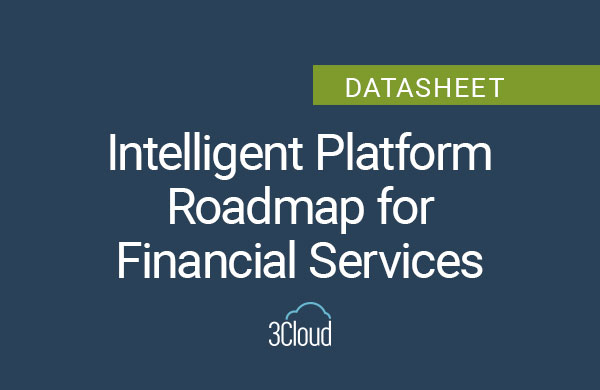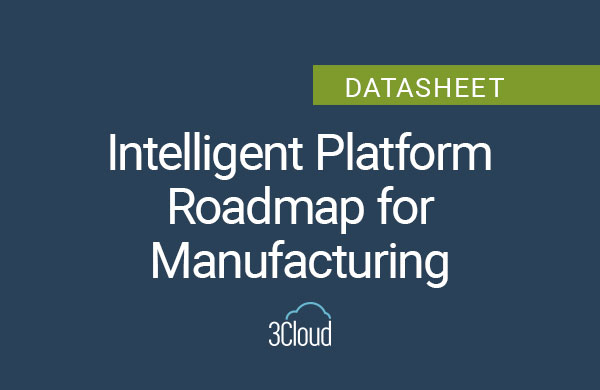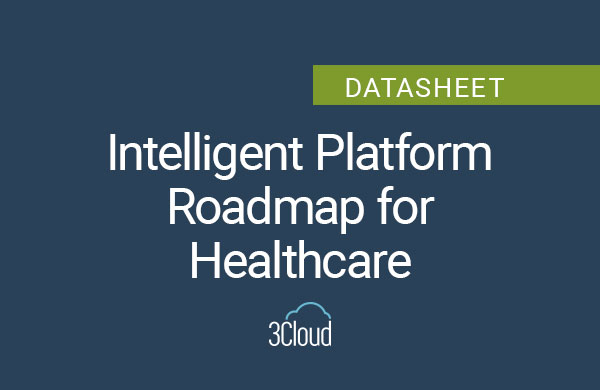Economic uncertainties are doing nothing to slow IT spending. Projections show a 7.5% increase in spending in 2025, leaving CIOs worldwide with more than $6.5 billion.1 Yet, at the same time, there’s no free money to play with. They must have experimented already. Now, they facing pressure to prove the returns justify the investment.
That was part of a recent conversation with Greg Todd, our senior vice president of Data & Analytics here at 3Cloud. In it, he contends that business results like automation, productivity, speed to market, and customer retention and attraction are now table stakes.
“Every business’ technology estate is growing increasingly complex, and CIOs are trying to keep up with the technology waves,” says Todd. “The challenge they’re facing is investing in new technologies and balancing speed to insights with the investments of those insights.”
The fact is that businesses that want to get there can’t look past a foundational concept, strengthening their digital core.
What’s standing in their way and how to address it makes up the rest of our conversation.
Challenges of a strong digital core
Every company has a digital backbone—its data pipeline. In the last few decades, a lot of money has been spent on capturing data. With the evolution of intelligent systems, there has been a significant focus on processing, interpreting, and using that data for outcome-driven decision-making.
Take, for example, healthcare. Many healthcare organizations are pivoting their business model to value-based care. They need to have the information available to make decisions on how to better attract patients and deliver better care. Yet, unlocking that information is challenging.
Todd likens it to the plumbing of a house. Knowing how to fit the pipes together and move data from one system to another can be challenging. Not to mention the types such as unstructured, sensor, and metadata that creates silos within the business.
Getting the digital core right
Modernization is the key, in Todd’s opinion. But first and foremost, avoid going too fast.
“Companies want speed to insights. But you don’t simply run a 100-yard dash in the Olympics. You train for it,” says Todd. “You slowly build up the stamina and ability to do something as complex as that. We meet those companies at their fitness level and help train them to run their sprint.”
Todd suggests looking at the business’ existing data or application estate to determine what tools are needed to capture the insights that you want. If not, ask questions like:
- Do I need to add new data sets to my core?
- What is the right mix of capabilities and services I need to get in better digital shape?
- What transformation initiatives might I need to implement from a people and processes standpoint so we can deliver outcomes faster?
Taking the right steps
Companies that have built a strong digital core have experienced significant scale. A study by Accenture shows that companies have achieved a 60% higher revenue growth rate and a 40% higher profitability.2
Those numbers are staggering. Of course, getting the right pieces in place to see that increase doesn’t happen by chance. Todd would advise CIOs to have a vision and work with a partner to navigate getting to it if they don’t already have a vision set out.
“Many consultants will tell you this is the art of what’s possible, paint a picture of the future state, and offer a roadmap to get there,” says Todd. “The problem is companies are inundated with hundreds of use cases, and they don’t know where to start.”
Todd suggests filtering out the noise, creating a clear path to value and return on investment by focusing on a discrete set of use cases. Your partner on this journey should be able to point you in the right direction on where to focus. Establishing those use cases and getting value from them, companies can then build a repeatable pattern. And by identifying use cases according to time-to-value, businesses can also align their investments with emerging strategies.
“It’s not a trial-and-error situation,” says Todd. “We bring accelerators, simplified sets of use cases by industry on how to use the data in an impactful, faster way. We know what works. And it’s this concept of producing insights via use cases that you make repetitive and start feeding through the factory quicker. That’s the type of industrialization we’re bringing our clients right now.”




